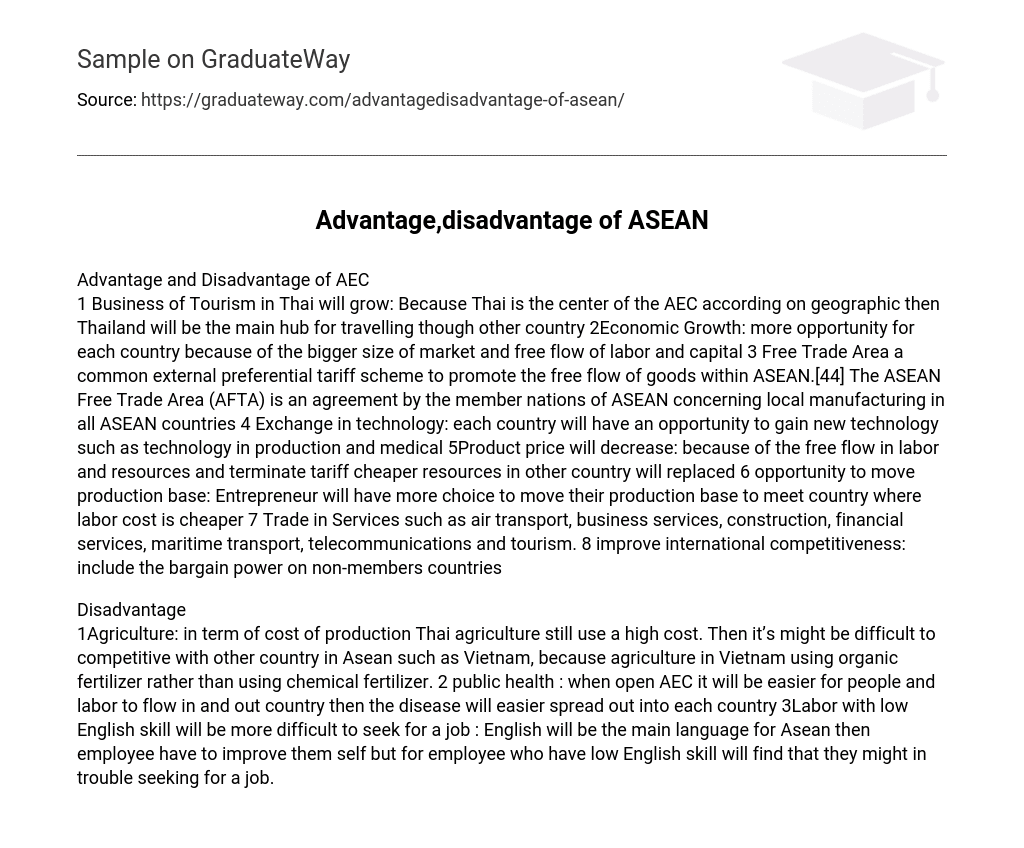Advantages and Disadvantages of AEC
- The geographical location of Thailand as the center of the AEC will lead to growth in the tourism industry, making it a key destination for traveling to other countries.
- Economic Growth will be experienced by all member countries due to the larger market size and free flow of labor and capital.
- AFTA, a common external preferential tariff scheme, promotes the free movement of goods within ASEAN, creating a Free Trade Area.
- Technological exchange provides opportunities for each country to acquire new technology, particularly in production and medical fields.
- The elimination of tariffs and free flow of labor and resources lead to decreased product prices sourced from other countries.
- Entrepreneurs have the option to relocate their production base to countries with lower labor costs, expanding their opportunities for production.
- Trade in Services encompasses air transport, business services, construction, financial services, maritime transport, telecommunications, and tourism.
- Enhancement in international competitiveness empowers member countries when negotiating with non-member nations.
Disadvantages of the AEC include:
1. Agriculture: Thai agriculture faces challenges in competing with other ASEAN countries, such as Vietnam, due to high production costs. Vietnam’s use of organic fertilizer instead of chemical fertilizer gives them a cost advantage.
2. Public health: The opening up of the AEC may lead to increased movement of people and labor across borders, raising the risk of disease spreading.
3. Limited employment opportunities for low English proficiency labor: As English becomes the main language in ASEAN, employees need to improve their language skills. Those with low English proficiency may struggle to find job opportunities.





